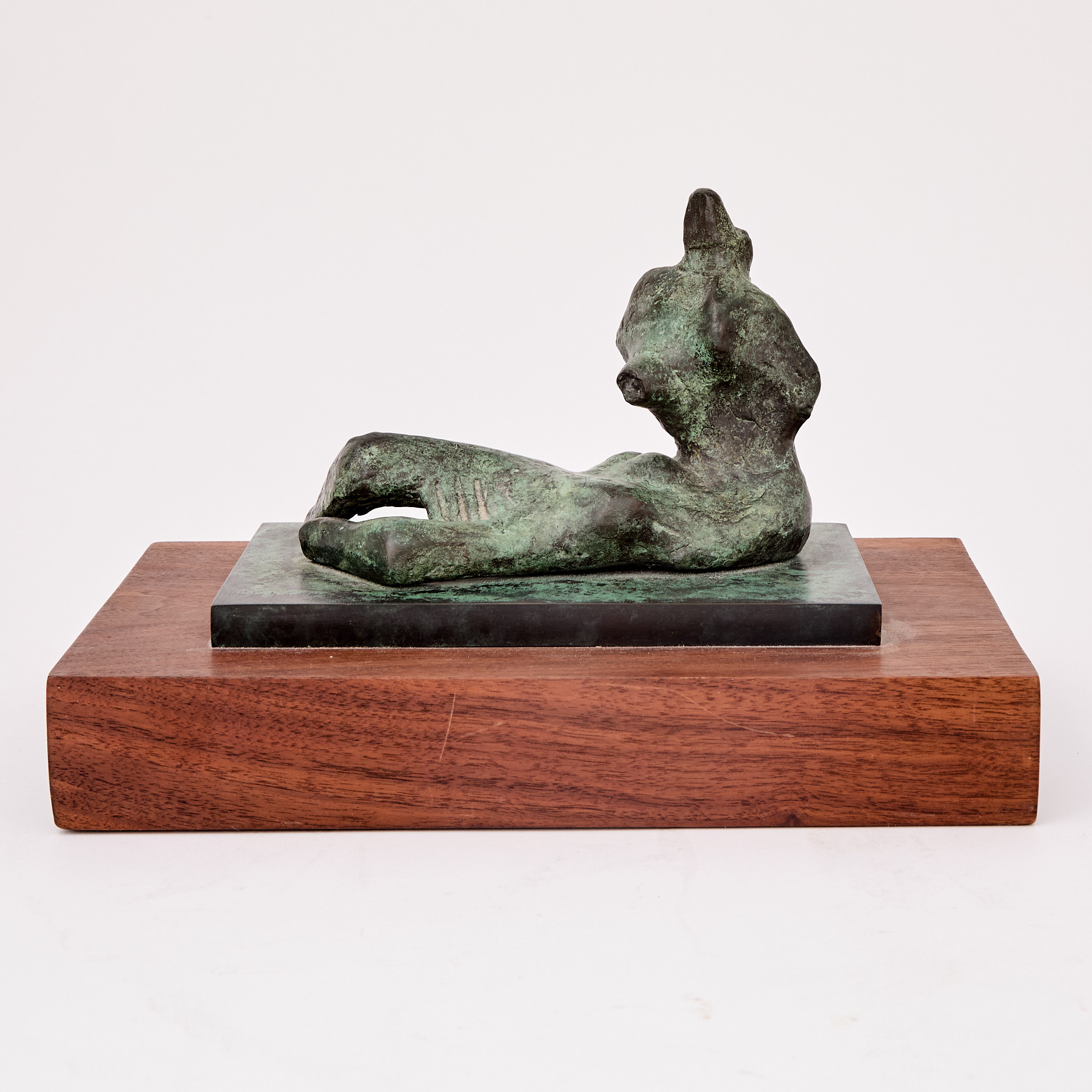
Henry Moore
British, 1898-1986
Henry Moore was a leading figure in 20th-century sculpture, known for his monumental bronze forms that redefined the role of sculpture in public spaces. Born in Yorkshire, England, he studied at the Leeds School of Art and the Royal College of Art in London, emerging as a central voice in what would later be called the “British sculptural Renaissance.” Influenced by non-Western art, particularly pre-Columbian, African, and Cycladic sculpture, Moore developed a visual language that transcended traditional European styles.
Moore’s work, often inspired by the human figure, combines abstraction with a deep connection to natural forms. His recurring motifs—reclining figures, mother-and-child groupings, and hollowed-out torsos—evoke both vulnerability and permanence. His use of negative space, organic curves, and durable materials positioned him as a key contributor to postwar modernism. These sculptures, often installed outdoors, became symbolic of endurance, recovery, and shared cultural identity in the years following World War II.
Internationally recognized, Moore’s legacy endures through major public commissions and a lasting influence on the direction of contemporary sculpture. At Doyle auctions, his works reflect continued interest in modern European sculpture, drawing collectors who value the emotional and physical presence Moore brought to form and space.




